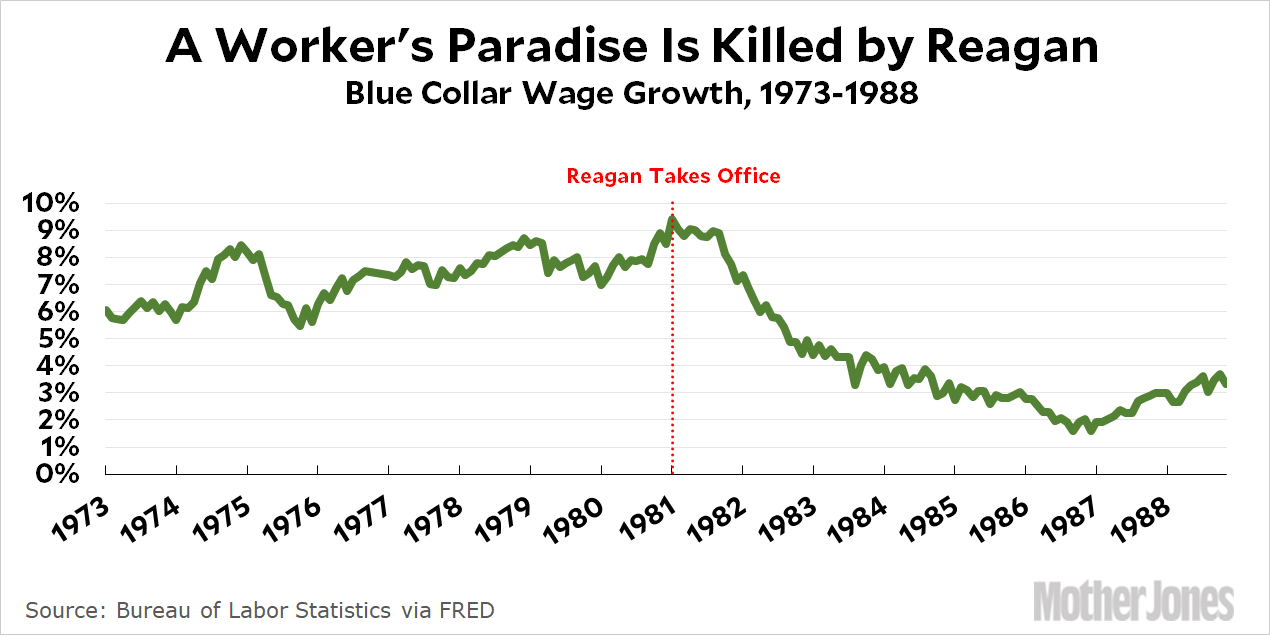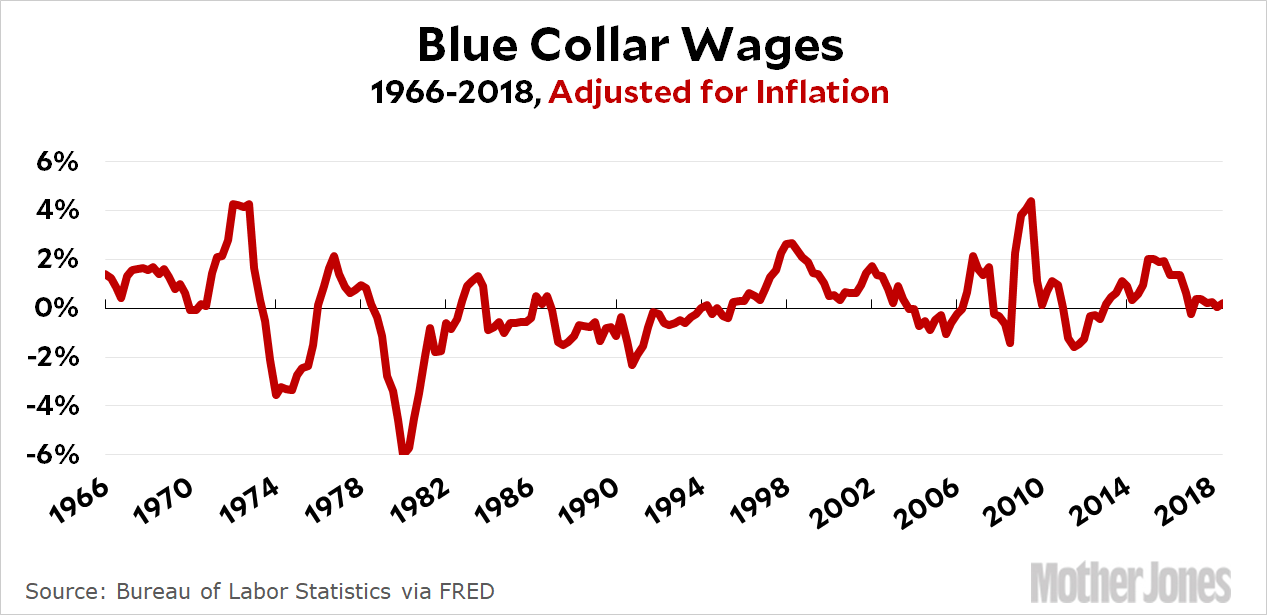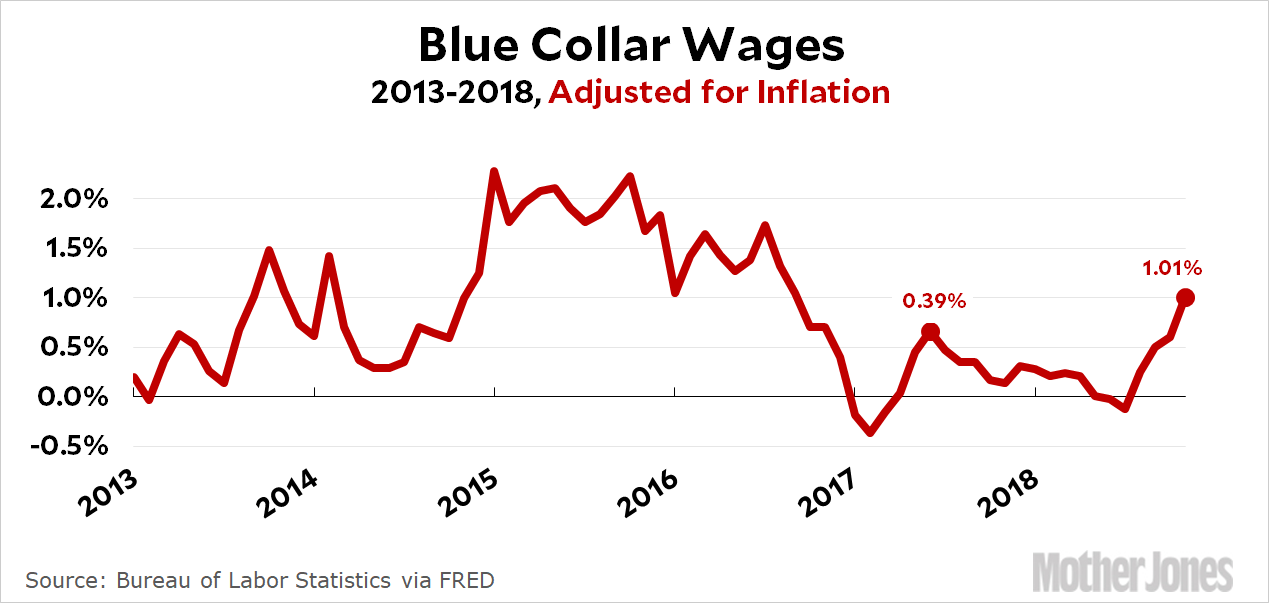Wages are growing. The most recent data on wages (more specifically, average hourly earnings) finds that they are up over 3 percent relative to one year prior. And the pace of wage growth accelerated throughout 2018. The early months of 2018 saw wages growing at about 2.6 percent, noticeably slower than the 3+ percent growth workers have recently enjoyed.
Has everyone lost their mind? Over and over I keep hearing that wages are up “over 3 percent” compared to last year. And I guess that’s true. By the same measure, though, I’d like to present to you the greatest era of economic progress in the history of the United States. Behold:

Unbelievable! Workers were making wage gains 6, 7, even 8 percent per year under Ford and Carter, and then Ronald Reagan took office. Within a few years that was down to 2 percent. What a terrible president! I’m sure Strain agrees that we should rip his portrait down from the White House walls.
Now, if you’re of a certain age, you may be thinking that you don’t recall the 1970s being quite so incredible. There’s something missing from my chart. What could it be?
Oh yes: inflation. Let’s take a look at blue-collar wages adjusted for inflation:

The 1970s were an era of high inflation, and wages didn’t keep up. From 1973 through the end of 1980 blue-collar wages declined 12 percent when you adjust for inflation. As it happens, blue-collar wage growth stayed stagnant during the Reagan era, but at least it wasn’t quite as disastrous as the previous eight years.
If you want to look at wage growth, you have to adjust for inflation. Period. There are only a very few specialized instances where you want to look at nominal wages, and those are unlikely to come up in ordinary conversation. So for the last time, here is real wage growth for blue-collar workers over the past five years:

There’s a nice spike in the final few months of 2018, but that’s all there is—and that spike is around 1 percent, not 3 percent. It’s good news, but it’s hardly record shattering and it hasn’t lasted long enough to know if it’s for real, or just an artifact of a temporary drop in the inflation rate.
I should note that this all starts with the mainstream media. By reporting nominal wage growth first, and only later (maybe) adjusting it for inflation, they encourage people to use the nominal number. Anyone who skims an article will assume that wages really are growing 3 percent, as will anyone who wants to be deliberately deceptive about it. And they’ll all be able to point to the first paragraph of a Wall Street Journal article to back up their point.
Stop it.

















